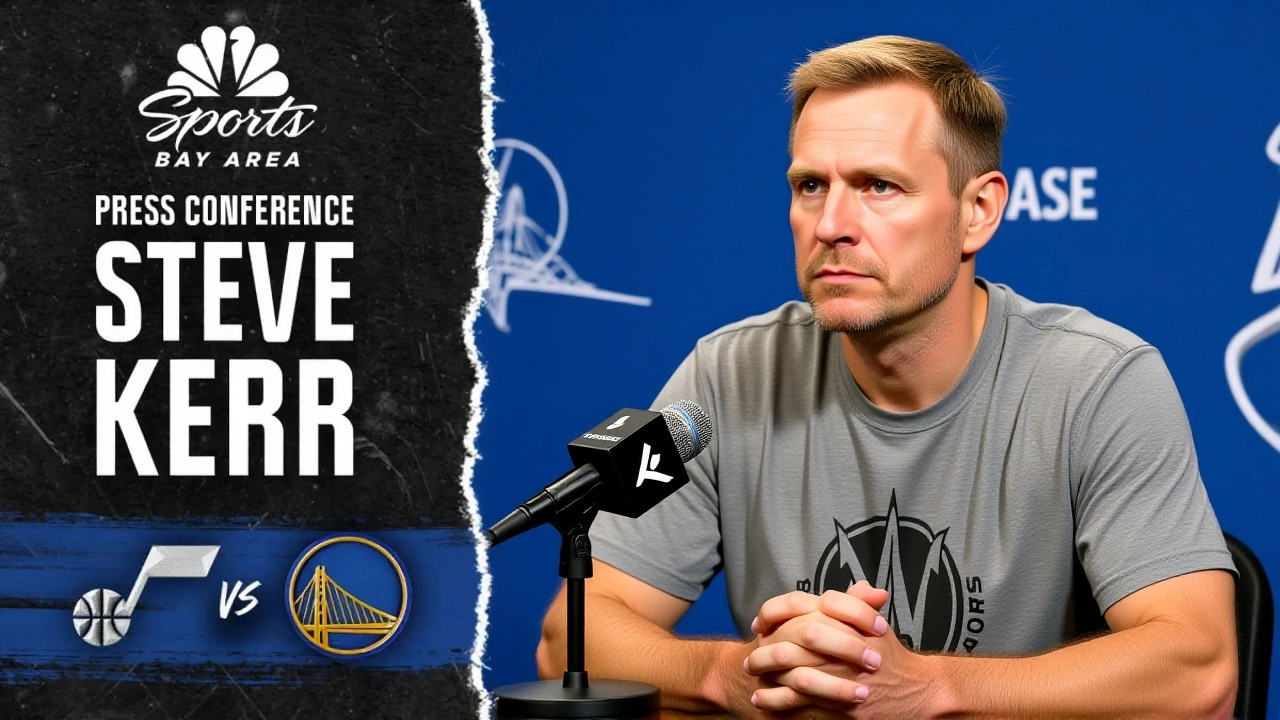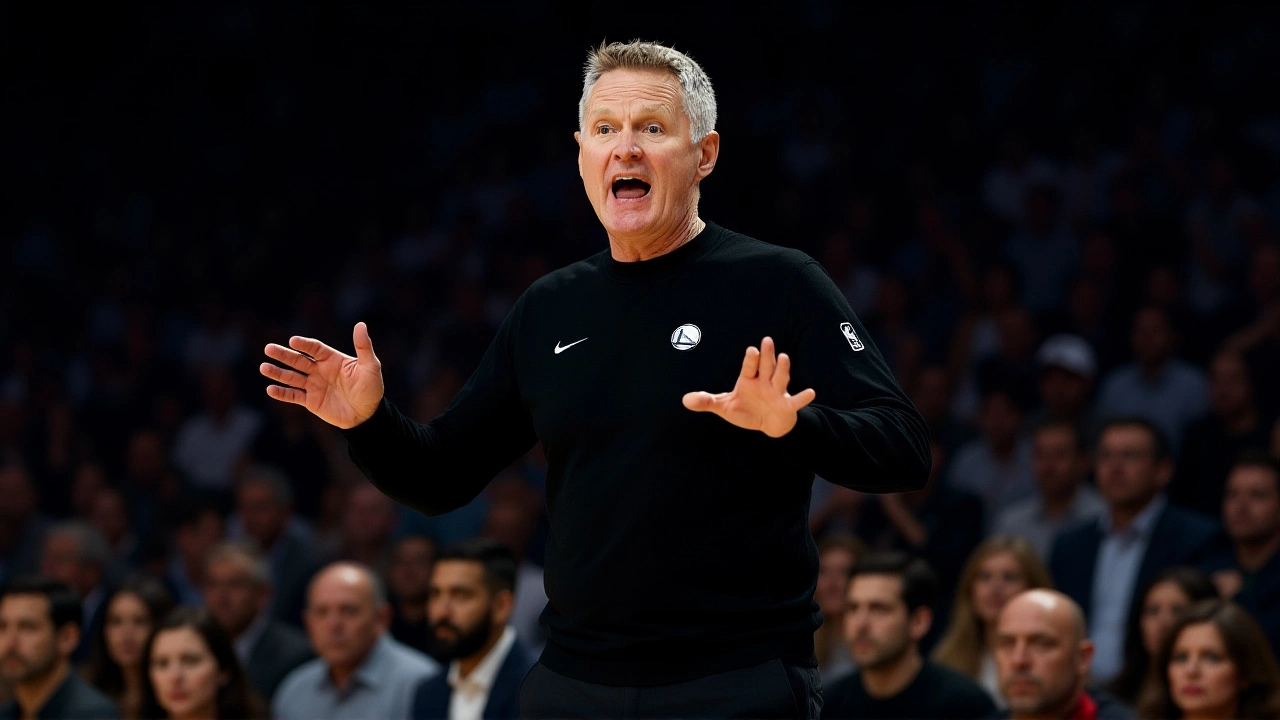 Nov, 26 2025
Nov, 26 2025
The Golden State Warriors didn’t just beat the Utah Jazz — they dismantled them. On Monday, November 24, 2025, at Chase Center in San Francisco, the Warriors rolled to a 134-117 victory, handing the Jazz their fifth straight loss and deepening the growing sense of unease in Salt Lake City. Even with a dazzling 28-point, 7-assist performance from 22-year-old Keyonte George, the Jazz couldn’t overcome a catastrophic second-quarter collapse that turned what started as a promising night into a painful reminder of how far they’ve fallen.
George’s Brilliance, Alone Wasn’t Enough
He was the only one playing like he belonged. From the opening tip, Keyonte George looked like a man possessed. He scored 15 of Utah’s first 11 points, hitting five of his first six shots — including two threes — as the Jazz raced out to an 11-0 lead. The crowd at Chase Center, still settling into their seats, fell silent. For a few minutes, it looked like George might carry Utah to an upset. He moved with a quiet confidence, attacking the rim, pulling up from deep, even drawing fouls. He finished the night with 28 points, 6 rebounds, 2 steals, and only 2 turnovers in 37 minutes. His shooting line — 10-of-17 from the field, 4-of-8 from three, 4-of-7 from the line — was the kind of stat sheet that earns All-Star consideration. But here’s the cruel twist: he had no one else beside him. "Every possession was uphill," said a broadcast analyst during the third quarter. "No spacing. No secondary creator. No relief. Just George, trying to will a broken team into relevance."The Warriors’ Second-Quarter Avalanche
And then — silence. While George kept scoring, the Jazz offense evaporated. In the second quarter, they missed 12 straight shots. Twelve. Not nine. Not ten. Twelve. Meanwhile, the Warriors, led by Stephen Curry, unleashed a 21-0 run — the worst 6-minute stretch of the season for Utah. Curry, 37, didn’t even start the quarter on the floor. He was resting. And still, the Warriors tore apart Utah’s defense. Buddy Hield hit back-to-back threes. Andrew Wiggins slashed through the paint. Klay Thompson, back from injury, found rhythm just in time. By the time Curry returned, the Jazz were already down 18. The game, for all intents and purposes, was over. Curry finished with 31 points, six three-pointers, and four rebounds. He didn’t need to dominate the entire game — just enough to close the door. "I knew we had to respond," Curry said after the game. "They came out hot. But we’ve been here before. We know how to flip the switch."Utah’s Structural Crisis
The Jazz are now 5-12. Their last win? October 30. Their next game? Tuesday night in Denver. They’ve lost five in a row by an average of 17.2 points. Their roster is young, but it’s not just inexperience — it’s a complete lack of cohesion. George, a promising second-year guard, is being asked to do too much: initiate offense, create for others, carry the scoring load, and defend multiple positions. He’s averaging 22.4 points over his last five games. But his teammates? They’re shooting 38% from the field and 29% from three during the streak. "It’s not on George," said former Jazz guard Jeff Hornacek on ESPN. "It’s on the front office. They traded away their best playmakers and didn’t replace them. Now they’re asking a 22-year-old to be the engine of a team that doesn’t have a transmission."
Warriors’ Resilience on Display
For the Warriors, this win was about more than just climbing back to .500 at 10-9. It was proof they can win without their stars playing perfect basketball. Curry had a quiet first half. Hield was off early. Yet they still found a way. That’s the hallmark of a veteran team. They’ve been here — through injuries, slumps, doubters. They know how to weather storms. "We didn’t panic," said head coach Steve Kerr. "We trusted our system. We trusted each other. That’s what separates us from teams that are just talented — we’re connected."What’s Next?
The Jazz face the Denver Nuggets on Tuesday, then the Lakers on Thursday — both tough road tests. They’re 0-7 on the road this season. Their playoff hopes are fading fast, and the trade deadline is only two months away. Rumors are swirling that Utah may move veteran center Walker Kessler or even George himself — not because he’s underperforming, but because they’re rebuilding around someone else. The Warriors, meanwhile, host the Portland Trail Blazers on Wednesday. They’re now 7-2 at home. With Curry healthy and Hield finding his groove, they look like a legitimate playoff contender in the West. But they’ll need to keep this energy up — the competition is tightening.
Behind the Numbers
- Keyonte George scored 15 of Utah’s first 11 points in the first quarter — the most points by a Jazz player in the opening frame this season. - The Jazz’s 12 consecutive missed shots in the second quarter was their longest scoring drought of the 2025-26 NBA season. - Stephen Curry has now scored 30+ points in five of his last seven games, despite playing just 31 minutes per night. - The Warriors have outscored opponents by an average of 14.3 points per game in the second quarter this season — the best in the NBA. - Utah Jazz have lost 10 of their last 11 games since October 28.Frequently Asked Questions
How did Keyonte George’s performance compare to other young guards in the NBA this season?
George’s 28-point, 7-assist night against the Warriors was one of the best individual performances by a guard under 23 this season. Only Cade Cunningham (31 pts, 9 ast) and Paolo Banchero (30 pts, 8 ast) have posted higher-scoring games with similar efficiency among young guards. But unlike them, George lacks elite supporting talent — making his numbers even more remarkable — and more tragic.
Why did the Jazz collapse so badly in the second quarter?
The Jazz had no offensive rhythm without George handling the ball. Their second unit — led by Dallin Hall and Ochai Agbaji — couldn’t create shots. They missed 12 straight field goals, including five open threes. Meanwhile, the Warriors’ defense tightened, switching effectively and forcing Utah into contested jumpers. It wasn’t just bad shooting — it was a complete breakdown in execution and confidence.
What does this loss mean for Utah’s playoff chances?
Slim to none. With a 5-12 record and the Western Conference’s toughest schedule ahead, the Jazz need to win 40 of their remaining 65 games to reach the play-in. That’s statistically impossible. Their focus now shifts to securing a high draft pick — possibly the top-three selection — and developing George as a franchise cornerstone, even if it means trading away veterans like Lauri Markkanen before the deadline.
Is Stephen Curry still an MVP candidate at 37?
Absolutely. Curry is averaging 27.8 points, 6.2 assists, and 4.9 rebounds on 48% shooting from deep this season — numbers that would be elite for a 27-year-old. He’s playing fewer minutes than ever, yet his impact is greater. The Warriors are 8-2 when he scores 30+, and 2-7 when he doesn’t. If he keeps this up, he’ll be the oldest MVP since Kareem Abdul-Jabbar — and the first in 50 years to win it after turning 37.
How did the Warriors overcome such a strong start by Utah?
They didn’t panic. They trusted their system. Even when trailing by 11, the Warriors kept moving the ball, setting screens, and waiting for open looks. Their bench outscored Utah’s 38-18 in the second quarter alone. And when Curry returned, he didn’t force anything — he just made the right play. That poise, that discipline, is what separates championship-caliber teams from ones just hoping to hang around.
